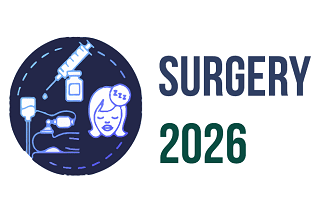4th International Conference on
Surgery and Anesthesia
November 26-27, 2026 | Dubai, UAE

Surgery 2026

Larissa General University Hospital, Greece
Abstract:
Autoimmune diseases in children may be linked to genetic, environmental, and hormonal factors. It’s estimated that 5% of children worldwide have at least one autoimmune condition, with many experiencing multiple autoimmune challenges. Around 80 autoimmune diseases are present. However, autoimmune diseases in children are rare. When they occur they can be challenging to diagnose and difficult to treat. Advances in our knowledge of the immune system are uncovering connections between inflammation and many different diseases. All autoimmune diseases have relapsing and remitting tendencies. Autoimmune diseases can affect almost any part of the body, though they often target connective tissues (skin, muscle and joints). Symptoms can range from fatigue and mild rashes to rare, serious side effects, like seizures. Diagnosis can be difficult, because many symptoms tend to come and go and are frequently nonspecific. They occur in different kinds of autoimmune diseases as well as other types of illnesses, like infection and cancer. Autoimmune diseases occur most often in females by a 3-to-1 margin over males. Organ-specific disorders (also called localized) focus on one organ or a specific type of tissue: Addison's disease affects the adrenal glands; Autoimmune hepatitis affects the liver; Crohn's disease affects the gastrointestinal tract; Multiple sclerosis (MS) affects the central nervous system; Type 1 diabetes affects the pancreas; Ulcerative colitis affects the gastrointestinal tract. Non-organ-specific disorders (also called systemic) cause problems throughout the body: Juvenile dermatomyositis affects the skin and muscles; Juvenile idiopathic arthritis affects the joints and sometimes the skin and lungs; Lupus affects the joints, skin, liver, kidneys, heart, brain, and other organs; Scleroderma affects the skin, joints, intestine, and sometimes the lungs. Pediatric autoimmune neuropsychiatric disorders associated with streptococcal infections (PANDAS) are rare neurobehavioral disorders in children. Affected children may have a diverse array of perioperative manifestations including compulsive behavior, agitation, and abnormal movements. Intravenous anesthetics have anti-inflammatory properties, which in most septic cases are useful for patients. The anti-inflammatory effects of ketamine may be related to the suppression of TNF production by macrophage in the presence of bacteria. Propofol inhibits the phagocytosis and chemotaxis of human monocytes through GABAA receptors. Inhalational anesthetics, in a dose-dependent manner, suppress cytokine release, reduces lymphocyte proliferation, induce apoptosis of the lymphocytes, and inhibits the function of neutrophils. lnhalational anesthetics influence the endocrine response from the hypothalamus-pituitary-adrenal axis and indirectly through the secretions of hormones, such as glucocorticoids and catecholamines. Long-term administration of general anesthesia drugs, due to their effects on cytokines, can lead to disease progression in patients with immune deficiency.
Keywords: autoimmune diseases; general anesthesia; children; immune system; PANDAS; OCD.
Biography:
Maria Dalamagka currently works at the Department of Anesthesia, General University Hospital of Larissa. Maria does research in acupuncture and Anaesthetics. She is PhD medicine, Doctor of pain, MD. Editorial board member: Scifed Journal, Pain Medicine and Management, Enliven, Cient Periodique, Journal of Pain Management and Medicine _Longdom, Anesthesia & Pain Research _Scivision, GJNFS, Journal if Pain and Relief. Speaker and organizing committee to conferences as: Pain Research and Management Zurich 2018, 5th international conference Pain Research & Management London 2017, and Vancouver, Canada 2016, Word congress on Pain Medicine and Management Singapore 2019, International Conference on Alzheimers & Neurodegenerative desease Madrid, Spain 2018, scientific federation speaker.
